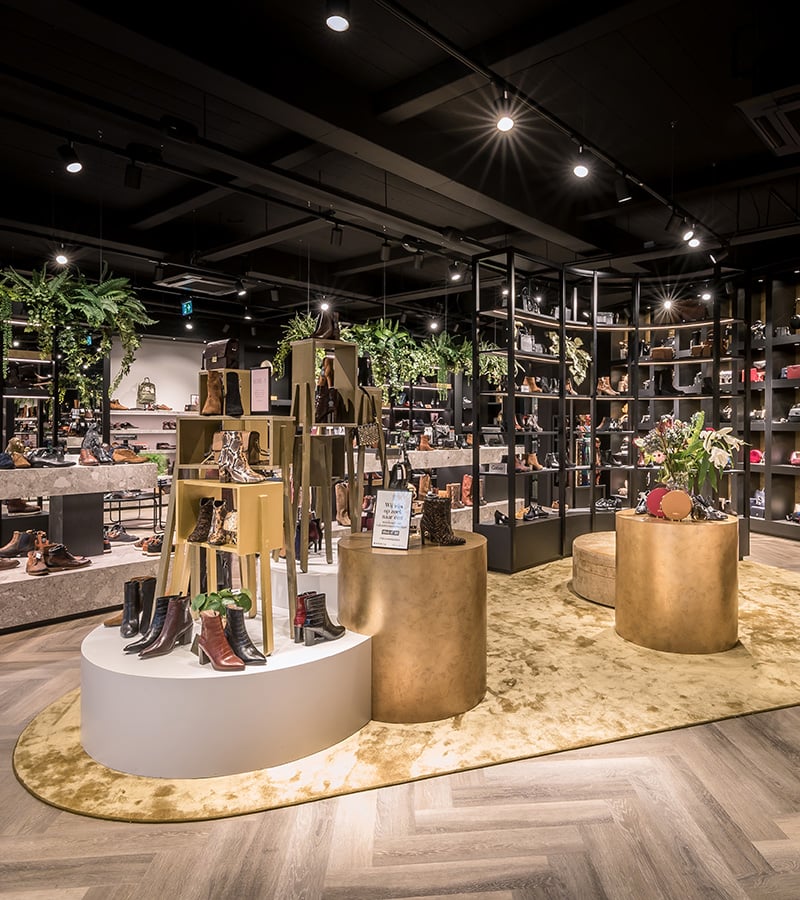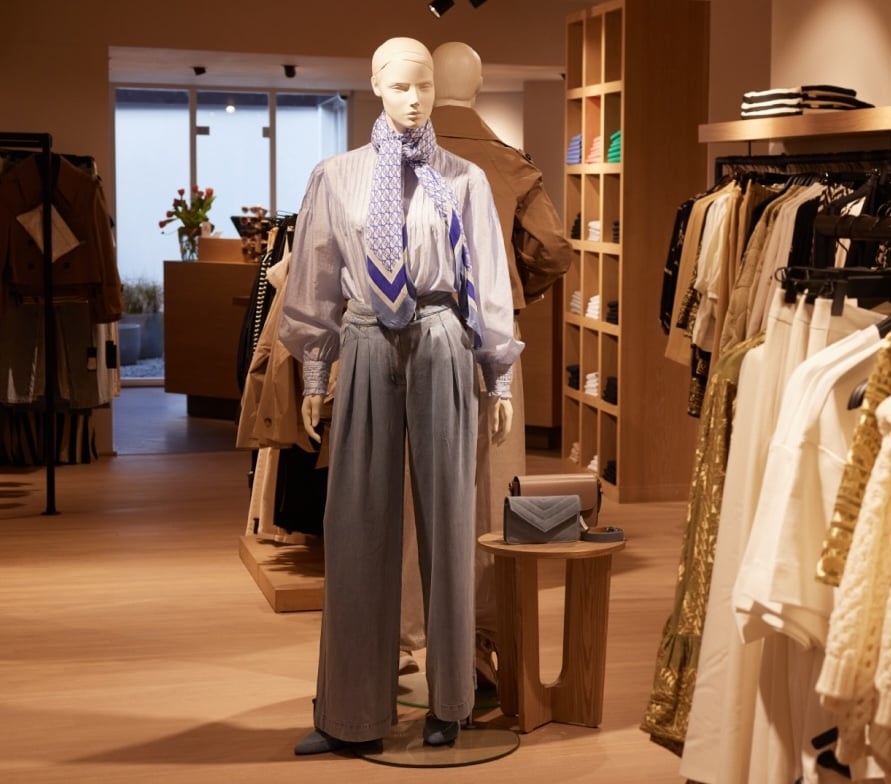
Omoda completely modernizes its business software with Thinkwise
37+
STORES and WEBSHOPS
100%
CUSTOMIZED
7+
SYSTEMS
The retail market is continuously changing and that places high demands on software applications. The guiding principle for Omoda is that IT applications must directly contribute to the distinguishing capability of the company. Behind the scenes the company has modernized all its business-critical applications in phases with Thinkwise, in cooperation with Vanenburg: the software development partner.
Martijn van der Maas was appointed as IT manager in 2017 to optimize the system management and maintenance of the business software and start developing more software in house.
“The experiences we had with outsourcing were not always very positive”, he says. “It was relatively expensive while in our opinion we had too little control over the result. Doing it yourself is really in Omoda’s DNA, that’s why we also do all distribution ourselves, that is our distinguishing factor. We try to be as lean as possible, carefully watch the costs and spend as little as possible.”
Software insourcing started at the end of 2017. At that time, the ERP system ran on an already outdated AS/400 system. There was a lot of knowledge and experience with Java within the IT team. Several applications peripheral to the ERP system were created in-house with Java at the time. This created applications around the outdated system. The original idea was also to build a new ERP system with Java. At the time, this was a logical idea because the entire team was made up of enthusiastic Java programmers. That became a problem because the business also wanted other applications because of the company’s rapid growth. Van der Maas realized that they needed to find a way to develop software more quickly.


“The biggest challenge was the outdated ERP system”, according to Van der Maas. “Through time everything has been added and modified. It was a challenge to be able to continue to maintain everything in the future.”
Another problem was the difficulty in finding software developers for AS/400 systems. Additionally, it was not feasible to train junior developers at Omoda in AS/400 technology due to its long learning curve.
“We ran into many difficulties: despite all our ambitions to develop and maintain software ourselves we had to admit that we could not deliver. In the long term we weren’t able to guarantee that we could maintain the platform with our own people. So, we started to look for alternatives. The objective was to completely replace the ERP system.”
“We can now meet almost every requirement from the end user. That would never have succeeded with a standard solution. With a standard package we often hear ‘that’s not included’ and you have to conform to the market standard. That doesn’t suit Omoda, we prefer to go for tailor-made solutions for our customers.“
In retail it is eat or be eaten: you have to grow otherwise you will not survive. Many retail companies that have failed to adapt to changing market conditions are now struggling or have gone out of business.
“Flexibility was therefore an absolute must for us. We also included the business in the decision-making process. We don’t consider this to be so much an IT project but more a change that must be supported company wide. ”
During our preliminary investigations we also examined the standard solutions SAP and Dynamics 365. But according to Van der Maas the benefits of these kinds of solutions do not outweigh the disadvantage of the lack of flexibility.
“And that flexibility is exactly what we wanted as a development group”, states Van der Maas. “Once again customizing standard screens would also require additional investments. Everything that isn’t standard is more difficult with packaged software. With Thinkwise it is much easier to adapt matters to suit your own requirements.”
Vanenburg is the software development partner that supports Omoda and provides advice on ERP solutions. The cooperation with Vanenburg began with an advice report. This report presented the options and the use of Thinkwise was proposed for this challenge.
Model-driven software development was immediately Omoda’s preference because for the most part traditional programming is not necessary. The added value of high development speed was very important. The focus for the ERP system is on building front-end screens. For example, a customer order and the various stages of such an order. Demonstrations from different providers were compared. Thinkwise came out as the winner.
“With other providers it appeared that their strength was in quickly developing applications independently from the ERP system. We wanted to replace the ERP system itself. And an additional advantage of Thinkwise is the complete access to the database. This was impossible with other providers and our development team had no influence at all on this part. This was a no-brainer for Omoda, our IT department wanted to have control of the data and its performance.”
Based on recommendations from Vanenburg the company began migrating the first components of the AS/400 system. Four Thinkwise developers from Vanenburg worked with the Omoda IT team.
According to Van der Maas there was initially skepticism within the IT team about partially abandoning the trusted Java. After the proof of value (PoV) from Thinkwise, that attitude changed because it became clear what the power of the platform is. Six weeks after the briefing Thinkwise presented a very convincing demo of the purchasing administration.
This PoV was also shared with colleagues from other departments. They primarily assessed the UI of the various screens. This resulted in permission to proceed.
“We found the purchasing administration to be a concise module with which to start and deliver within a couple of months. After those 6 weeks we had a completed product that gave us every confidence to continue.”


The purchase order module was immediately moved into Thinkwise and phased out from the AS/400. The logistic department was next to be transferred and in the meantime a part of the financial department has also been transferred.
The last item to be transferred was the core of the AS/400 data-base. These are the inventories with all their dimensions. This is the most crucial component for Omoda because everything that is sold revolves around the inventory. If the inventory administration is no longer reliable then that immediately leads to problems in the business operations. If this is not correct, then it affects the customers the most.“Vanenburg had a major advantage for us: they not only have expertise in the area of Thinkwise but also of Java. We could communicate well with them as partner. They recommended what we should build in Thinkwise and what in Java.”
“We felt there was still far too much manual work necessary to enter all the items. We then decided to replace the old PIM with our own developed system which exchanged product data with Thinkwise.”
“The financial truth is still in AS/400 but we are going to migrate that to Thinkwise before the end of the year. The last on the list is our Warehouse Management System (WMS), which is the logistic component that is also operated with mobile scanners. After that we will completely phase out AS/400. During the first quarter of 2023 we will replace the entire ERP system.”

Looking back on this extensive IT project, Van der Maas says that the major added value has been increasing Omoda’s distinguishing capability. The company is motivated to offer its customers the best personal advice and service. This personal approach is continued in the development of software. The front-endscreens must be as user friendly as possible.
“We can now meet almost every need of the end-user. That would never have been possible with standard software. With a standard solution we often hear ‘that’s not included’ and you then must conform to the market standard. That’s not what Omoda is about, we prefer to provide our customers with customization.”
Van der Maas further states that the cooperation with colleagues from the business has also been given a considerable boost.
“That occurs much faster with Thinkwise. During meetings they indicated exactly what they wanted and we can immediately modify, demonstrate and implement these requirements. We can now make real progress! Developing applications is much faster than before: creating and managing screens, adding roles and rights is standard functionality. You can then concentrate on the business cases that make you unique as a company. Previously a large part of our time was spent on traditional and repetitive Java programming. Now, the time-to-market, for example of product launches, has been considerably shortened.”
